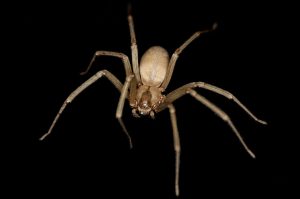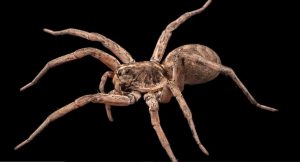Introduction
Rodents and spiders are notorious for penetrating our homes, and most of them are non-threatening. some may cause great fear due to their appearance and potential ability to bite. The two common mistaken spiders include the wolf spider and the brown recluse spider. Comparing between the two may help alleviate fear and know how to handle the two, in case one is experienced.
Physical Characteristics
Wolf Spider

- Size: Wolf spiders have a wide size distribution, but they are relatively small, typically measuring no more than 2 centimeters in length. Undefined 4 inches of body length have been found, proving their danger to the human body.
- Color: These are mostly brown and grey colors with black, grey, brown, and occasionally white stripes or other marks on their bodies.
- Eyes: They also differ from each other through the placement of eye, where one side eye is placement lower than the other side eye. These are large and own eight eyes, with two very large and obvious eyes in the center portion, which provide excellent nocturnal vision.
- Body Shape: It has rather muscular body and it legs and it has a coat of thick hair which is quite threatening as well.
Brown Recluse Spider

- Size: Spiders involved, such as brown recluse spiders, are generally smaller, being roughly 0. undefined The young adult male chameleon was 7 inches in body length and weighed 1.22 grams.
- Color: It is 8 – 14 cm long and has a grey to light or dark brown color with a violin-shaped pattern on the cephalothorax
- Eyes:They are also called eyed spiders or six-eyes due to the fact that they posses six eyes; these being two pairs of eyes unlike the general eight-eyed spiders.
- Body Shape: Its body does not possess much hair, and it is not as harsh as the Wolf spider. Its legs are the same color without any lineations of yellow or black.
Habitat and Behavior
Wolf Spider
- Habitat: Wolf spiders are suborder Latrodectus and are a part of the Sparassidae family of spiders and do not spin webs to catch food. It is terrestrial species that prefer to live in the wild; they are found on the forest floor, under logs and stones, and decomposing leaves in meadows and wooded areas. They may at times force themselves into homes in search of a place to stay, food or whatever their intendings are.
- Behavior: They are meat eaters and are predominant at night. Wolf spiders also move around and jump on their prey, something made easy by their excellent sense of sight since they are a type of hunting spider.
Brown Recluse Spider
- Habitat: The brown recluse spider is not aggressive at all, and his prefer areas of low activity. It resides in the hidden places such as basements, attic, closets, and so on, under furniture. What spins an irregular web in dark corners?
- Behavior: Brown recluse spiders obviously like to get space and are generally not aggressive toward people. They are also nocturnal and they roam at night in the search of insects.
Bite and Medical Significance
Wolf Spider
- Effects: To clarify, only wolf spider bites should not be poisonous or fatal to people out there. They can produce only a slight sting and skin redness, which is somewhat similar to that experienced from a bee sting.
- Symptoms: In most instances, the symptoms disappear on their own, but if they show signs of allergy, it is wise to go to the doctor.
Brown Recluse Spider
- Effects: Stings from brown recluses can be worse. They also induce necrotic skin lesions, which lead to tissue damage around the affected region by the bite.
- Symptoms: At times, the first signs and symptoms shown are components such as reddishness, soreness, and rashes. It may develop into a vesicle that goes on to become an ulcer after several days in the wound area. These complications can quickly escalate to systematic ones and the patient will present other symptoms like fever, chills and nausea that may need other medical management.
Prevention and Control
Wolf Spider Prevention
- Sealing Entry Points: According to Tom ‘’Ensure you block your doors and windows and any other points where the spiders can penetrate your house.’’
- Regular Cleaning: This covers aspects such as making your home clean all the time; you should avoid the stockpiling of items that could well be used as cobwebs by spiders.
- Outdoor Maintenance: If you have wolf spiders in your compound, ensure you clean it regularly, clear the leaves, and cut the grass.
Brown Recluse Spider Prevention
- Decluttering: The items stored in areas such as basements and attics should be cleaned and redecorated often.
- Sealing Cracks: To effectively keep off spiders, it is recommended that one should fill any openings which may be out in the exterior foundation, or within the walls of your house.
- Using Sticky Traps: To control the number of brown recluse spiders, sticky traps should be placed in areas, particularly areas where people move.
Conclusion
People should be informed, as well as the difference between wolf spiders and brown recluse spiders in order to take the right course of action. Even if the two kinds of spiders look very dangerous they in fact differ from one to another by their behavior and the possible consequences for humans. In fact, large as they are and relatively mobile, most of the wolf spiders pose no threat to human beings since they are not venomous. On the other hand, there are ugly spiders such as the brown recluse which is a threat to man and can harm him by sting which causes vomiting. That is why we are always constantly in danger of learning to protect ourselves from them and knowing how to correctly identify them allows us to coexist with these spiders safely.














